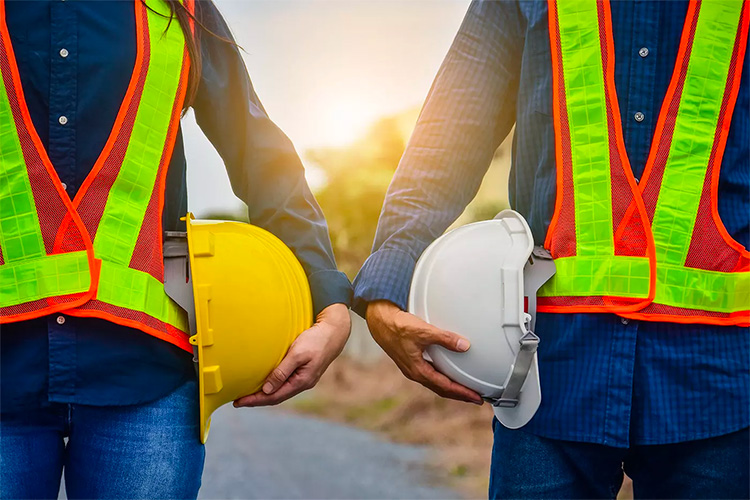As America's Manufacturing Comes Back Online, Are Increases in OSHA Roof Safety Inspections on the Horizon?
November 15, 2021
Read the full original article here: https://www.tractel.com/bluewater/osha-safety-inspection-frequency-increase-2021
The COVID-19 pandemic has brought significant disruption to the manufacturing sector, and the long-term effects are still unfolding. Many facilities that experienced slowdowns or complete shutdowns are now seeing increased activity and expanded operations. If you’re in the manufacturing business, you should expect this return to regular business to also signal an increase in OSHA inspection frequency.
In fact, OSHA says it is planning rigorous inspection and enforcement, and soon. While the agency highlights COVID-specific concerns in the media, any time OSHA is on site, they can and will inspect the entire workplace. It is critical that your manufacturing facility has all fall safety measures in place, long ahead of inspections — and it’s critical to know that OSHA inspections can be unplanned.
Why should your manufacturing company focus on roof fall safety solutions? Falls are a common cause of workplace injury, and fall protection is consistently in the top 10 most frequently cited OSHA standards violated. OSHA knows that too many companies cut corners on fall protection (especially on less-frequently accessed areas, such as rooftops), and they are looking for violators. Make sure you’re not on their list of citations by making sure you’re ready for an OSHA roof safety inspection.
OSHA Roof Safety Regulations and Requirements
Elevated working areas and rooftops call for suitable fall protection solutions, practices, and training. OSHA makes this clear in its regulations and requirements around fall protection and guardrail systems.
All workers must comply with the rules and regulations that apply to their specific workplace, their actions, and their conduct. Employers, too, are required to meet these standards. Even where there are not OSHA standards specific to a workplace situation, employers must meet the general duty clause. That means "a place of employment free from recognized hazards that are causing or are likely to cause...serious physical harm."
Below are some relevant OSHA roof safety regulations and rules. Knowing this information prepares your organization for coming OSHA inspections and helps you understand the safety equipment you need to pass.
Rooftop Safety Basics
If a worker is operating at the height of four feet or more (which obviously includes all rooftops), OSHA says fall protection is required. It is also needed when workers are exposed to the hazard of falling through something like a roof hole or skylight. The regulations also insist on fall protection when a worker faces the risk of falling into dangerous equipment, something inspectors will monitor.
Employers who fall under this standard should choose fall protection measures compatible with the work. Those measures could include guardrail systems, safety railing, nets, positioning devices, or other equipment allowed under OSHA. If an inspector drops by your site and these mechanisms are not in place, you are in for a hefty fine, not to mention the ongoing risk to your staff.
Safety Railing Use and Specifications
OSHA sets out specific standards for the safety railing as part of fall protection systems for roofs and how they are used. Guardrail systems must comply with detailed guidelines regarding size, strength, and materials of the rails. Some critical figures:
- Guardrail systems are capable of withstanding, without failure, a force of at least 200 pounds (890 N) applied in a downward or outward direction within 2 inches (5 cm) of the top edge, at any point along the top rail.
- The top edge height of top rails or equivalent guardrail system members must be 42 inches plus or minus three inches, above the walking-working surface. It can exceed 45 inches under certain conditions specified by OSHA.
- Mid rails, screens, mesh, panels, and other intermediate members must be installed between the walking-working surface and the top edge of the guardrail system when there is not a wall or parapet at least 21 inches high.
- Top rails and midribs must be at least 0.25 inches in diameter or thickness
- Steel banding and plastic banding are not allowable materials for top or mid-rails.
Just these few requirements show why it's important to work with an experienced, qualified fall protection system supplier to ensure that your choices are compliant.
You Need Fall Protection Systems for Roofs in Your facility
If you are taking fall protection as seriously as you should, you will consider fall protection systems for roofs critical. OSHA knows that falls are a preventable problem, including within the manufacturing industry, and this is an area where inspections are practically guaranteed to see increased and sustained frequency.
OSHA requires all employers to plan for safety, provide the right equipment, and provide training on that equipment. These are the areas inspectors will scrutinize, especially as industries ramp up production and more workers are potentially at risk.
The Right Fall Safety Partner
Working with a highly experienced safety partner is the best way to prepare for upcoming planned or surprise OSHA inspections. BlueWater is an industry leader in safety railing systems and other product solutions that make your workplace safer and put you in compliance with all OSHA roof safety requirements.
We can provide tailored advice to your business to ensure that worker safety is at the forefront of everything you do. Our advice and strategy include recommendations for products purpose-built for worker safety.
Explore our website to learn more about BlueWater by Tractel and how we can help companies like yours.
Still not sure where to start? Talk to one of our fall protection specialists today. We're here to help you (and your company) with reliable, innovative, cost-effective solutions and services for working at height.
@BlueWaterMfg #BlueWaterMfg #skylight #osha #safety
Company:  BlueWater Mfg
BlueWater Mfg
Product: SafetyRail 2000 Architectural Series
Source: https://www.tractel.com/bluewater/osha-safety-inspection-frequency-increase-2021
Tags:


